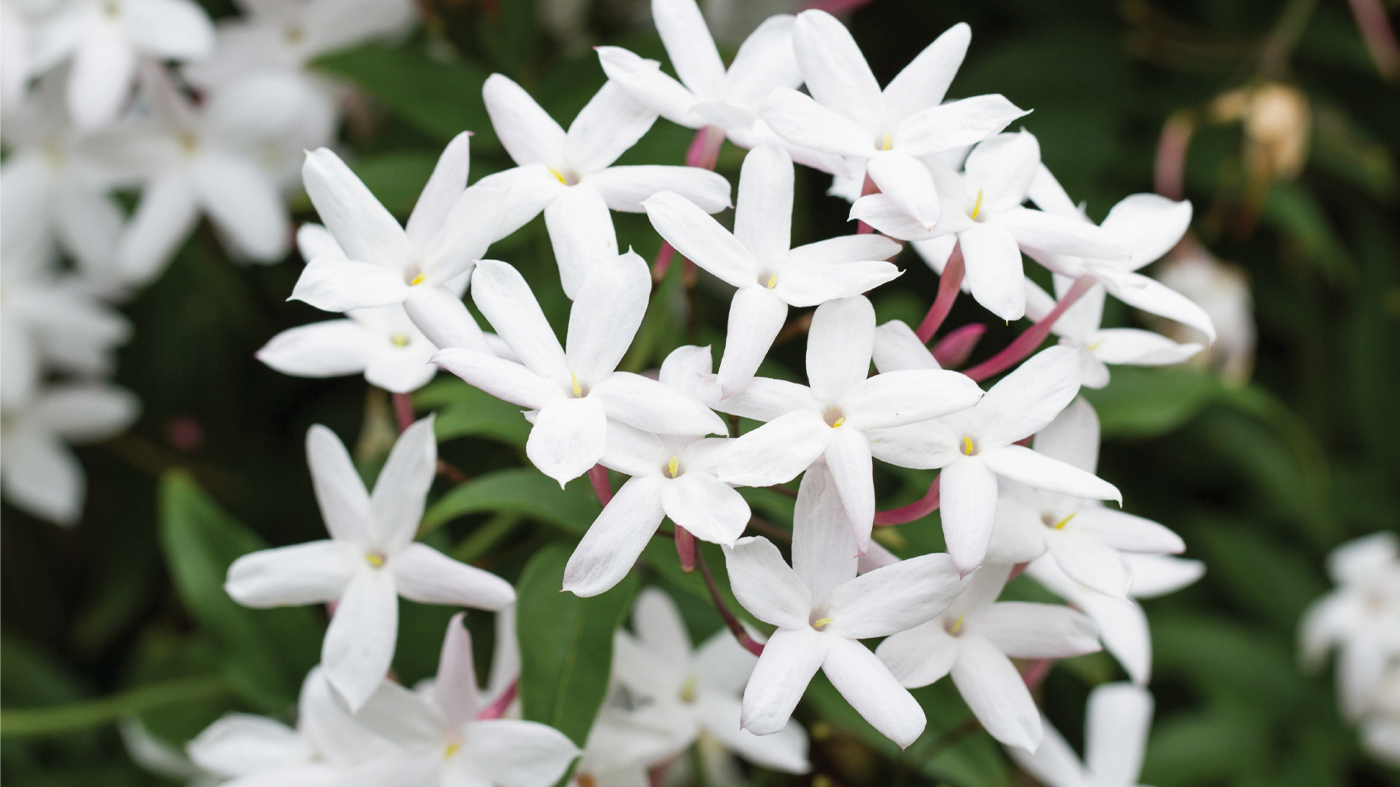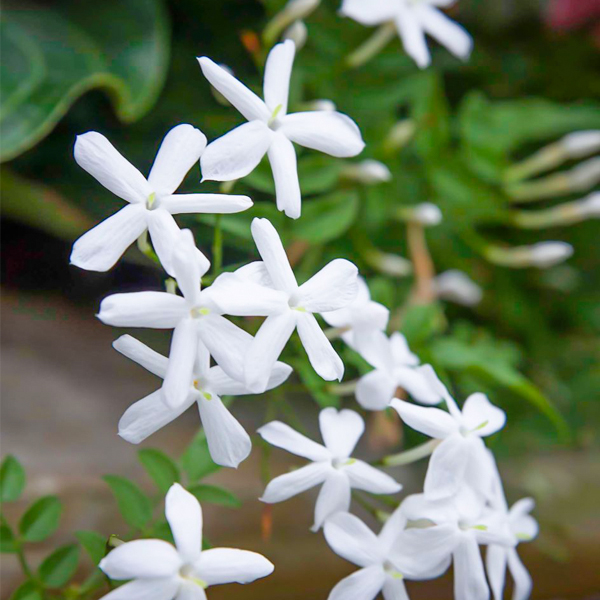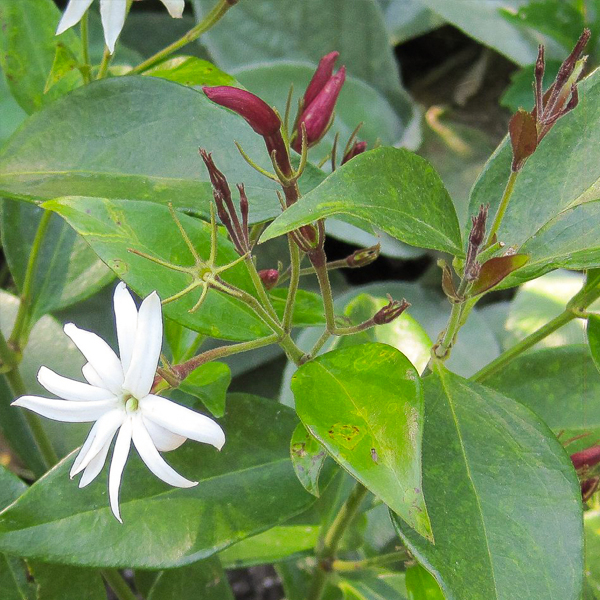

Jasmine
Jasmine spp.

While sorting through the heady phrases used to describe jasmine's scent, one becomes convinced that this flowering houseplant has no equal: "intensely aromatic," "the scent of French perfume," "delicious essence," and "the poet's flower." These descriptions alone explain why this flowering vine is cultivated as an indoor plant.
Most species of jasmine grown today were originally native to tropical Asia and parts of China. The jasmines that can be grown as houseplants are tropical or subtropical vines or subshrubs grown for their fragrance. While there are over 200 species grown throughout the world, only a few can be successfully grown indoors.
The cultural requirements of the indoor varieties of jasmine are the same (with the exception of the cool-weather jasmine). They all need bright light with at least four hours of direct sun per day. In spring and summer, water regularly and fertilize every two weeks with a high phosphorus fertilizer to encourage good flower development. If possible, place the vine outside in direct sun for the summer (after a gradual period of acclimatization to the outdoors). Pruning and repotting should take place in spring. Jasmine, like many other tropical flowering plants, requires at least a 15-degree difference between day and night temperatures.
Whether trained around a wreath form, trailing down from a hanging pot, or vining up an indoor trellis in a sun-filled window, the glossy leaves and exotic perfume of jasmine set the scene for a tropical winter landscape. Come see and smell fragrant jasmine in the Garden's Greenhouses this winter.



